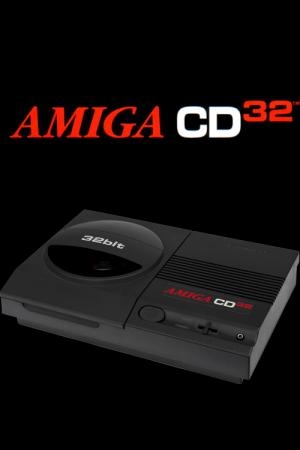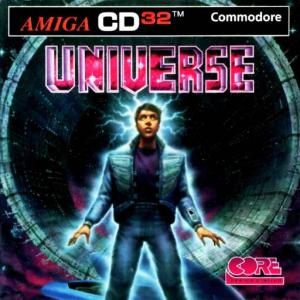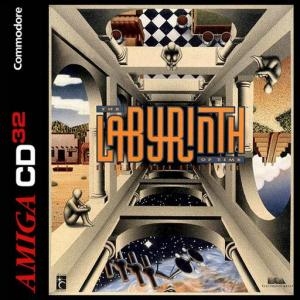
Amiga CD32
Amiga CD32 Specifications
| Manufacturer: | Commodore |
| Developer: | Commodore |
| CPU: | Motorola 68EC020 |
| Memory: | 2 MB |
| Graphics: | Advanced Graphics Architecture (AGA) Akiko chip |
| Sound: | 4 × 8-bit PCM channels (2 stereo channels), 28 kHz sampling rate |
| Medium: | CD-ROM |
| Display: | 320×200 to 1280×400 (NTSC), 320×256 to 1280×512 (PAL); 256 colours in indexed mode, 262 144 colors in HAM-8 mode |
| Controllers: | 2 |
The Amiga CD32, released by Commodore in 1993, is the first 32-bit home video game console released in western Europe, Australia, Canada and Brazil. It was based on Commodore's Advanced Graphics Architecture chipset, and is of similar specification to the Amiga 1200 computer. Using third party devices, it is possible to upgrade the CD32 with keyboard, floppy drive, hard drive, RAM and mouse, turning it into the equivalent of an Amiga 1200 personal computer. The CD32 is capable of running most of the titles developed for the Amiga CDTV multimedia device, but differences in CPU speed and Kickstart version prevent some of the earlier CDTV titles from running. Many of the games released for the CD32 are simply ports of games that are already available for Amiga computers. One benefit of this is that, when appropriate, many games retain the ability to use an Amiga mouse (in port 2) or Amiga keyboard (plugged into the AUX port).
In the Christmas period following its launch, the CD32 accounted for 38% of all CD-ROM drive sales in the UK, exceeding sales of the Mega-CD; however, it was discontinued as Commodore went into bankruptcy.
The CD32 was marketed on its box as "The World's First 32-bit CD Games Console". Although it is the first such machine released in Europe and North America, it was beaten to market by seven months by the FM Towns Marty, a console released exclusively in Japan. However, the CD32's 68EC020 processor has a 32-bit data bus both internally and externally, but the 386SX in the FM Towns Marty has a 16-bit data bus externally. However, because the CD32 shipped with 2MB of RAM shared between the chipset and the CPU, this means the CPU is bottlenecked when accessing memory, similar to an Amiga 1200 operating without 32-bit "fast" (CPU dedicated) RAM.
Ultimately, Commodore was not able to meet demand for new units because of component supply problems. Sales of the CD32 in Europe were not enough to save Commodore, and the bankruptcy of Commodore International in April 1994 caused the CD32 to be discontinued only eight months after its debut. During the brief Amiga CD32 presence in the market, approximately 25,000 units were sold in Germany, and around 100,000 units were sold in Europe.
Latest on Amiga CD32

Wembley International Soccer
Officially licensed by the old Wembley stadium, this football game is essentially an advanced version of Ocean's European Champions. Gameplay emphasiz...

Universe
You are Boris Verne, a normal guy who is been cast in a parallel universe because of your uncle's Virtual Dimension Inducer. There you'll have to find...

UFO Enemy Unknown
Command Earth's Forces Against the Alien Terror You are in control of X-COM: an organization formed by the world's governments to fight the ever-in...

Turrican Anthology
A complete revamp of the previous anthology release, now all three games feature seven button CD32 pad support - almost all functions are on discrete ...

Trivial Pursuit: The CD32 Edition
This is the earliest home computer incarnation of Horn Abbot International Ltd's classic board game, Trivial Pursuit. The game involves answering ques...

Thomas the Tank Engine & Friends Pinball
4-table pinball simulator game for Amiga CD32 featuring Thomas the Tank Engine and friends.

The Seven Gates of Jambala
The Seven Gates of Jambala is a Jump & Run game. Business with people to come continues, really tough mystery to escape from Jambala. Beware of the my...

The Lost Vikings
The Lost Vikings is a side-scrolling platform puzzle game with a twist. Instead of one character who can jump, run, shoot, collect items, flip switche...

The Labyrinth of Time
King Minos has commissioned a labyrinth bridging time and space which will allow Minos to rule the earth. You have been chosen to save the world by de...

The Kiwi's Tale
The Kiwi's Tale is a sequel/remake of The New Zealand Story. Developed for the The Retro Remakes 2008 competition, it tells the story of Nik, a kiwi w...